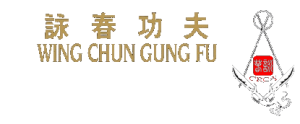Check up your Wing Chun
Check up your Wing Chun
Sometimes you work out so much and yet you don’t see improvements. You feel stuck.
Or it happens to train for a long time and realize you’re not able to apply in a particular context what you have learned.
When one or both of these things happen, you feel downhearted.
You wonder why you can’t apply it and sometimes you end up blaming Wing Chun considering ineffective, when the problem has to be found somewhere else.
What I am about to present is a simple evaluation system, or self-assessment, taken from “Coaching”.
Before we begin, two clarifications:
1) Wing Chun is effective, but it is not the “cure for all our ills”. If it doesn’t work well how another system does, probably you are pulling it in an environment in which another system is more specialized. Then, perhaps, the problem lies in the alignment between your objectives and instruments;
2) Wing Chun does not make you unbeatable. You will always find a better fighter. If you lose the match, however, maybe is not because you train Wing Chun.
The tool that we use for the assessment of is the wheel into wedges.

A small description of the various segments:
1) athletic training: coordination, flexibility, balance, strength, speed, power, endurance…;
2) Technical Quality: As the name says, the quality of technical movements, from the single technique, to the drill , to the more complex sequence;
3) impact Quality: The level of conditioning of arms and legs from by the Iron palm training, and the ability to impact with power and precision on various pads/bags;
4) Sparring: The ability to apply drills in a non cooperative context.;
5) Combat Strategy: The ability to change fighting strategy to adapt it to the kind of opponent and kind of fighting;
6) Stress Management: The ability to remain focused under pressure;
7) Motivations / beliefs: The reasons that led you to practice Wing Chun and beliefs on Wing Chun and about yourself;
8) System Knowledge: Knowledge of the principles and strategies of Wing Chun.
Now, for the analysis, just give a score from 1 to 100 for each sector and the paint the corresponding wheel sector according to this value. If in an area you feel perfectly satisfied, give 100 and paint the entire sector . Analyze the next sector and so on until the entire wheel is covered.
When you finish, look at the entire wheel..
Example:
A Wing Chun practitioner has an excellent technical quality, he is good in drills in an uncooperative environment, he has an excellent knowledge of the system, it is motivated and with a great confidence in himself.
A great practitioner, right?
Still, let’s assume that he is not able to fight well and he begins to think Wing Chun doesn’t work. Where the problem may lie?
If we analyze all sectors, we may see that he lacks in athletic training (he’s not able to hit with power), he lacks of impact quality (his hands and shins are not conditioned), when he is under pressure he panics and fails in applying techniques and his strategy, even if is good , is not good enough to adapt him to the opponent or to the kind of fight.
So, with a better analysis, we find that what we considered a good practitioner, is not so good, and we have found where he lacks and what he as to train more.
We also prove him that it is his fault and not Wing Chun fault.
The model we are examining is called the wheel because it should be able to roll. The first analysis to do so is the entire model.
Always ask yourself If this were a real wheel, would you put it to on your car?
When everything is good, this is what you should have: A harmonic wheel.



